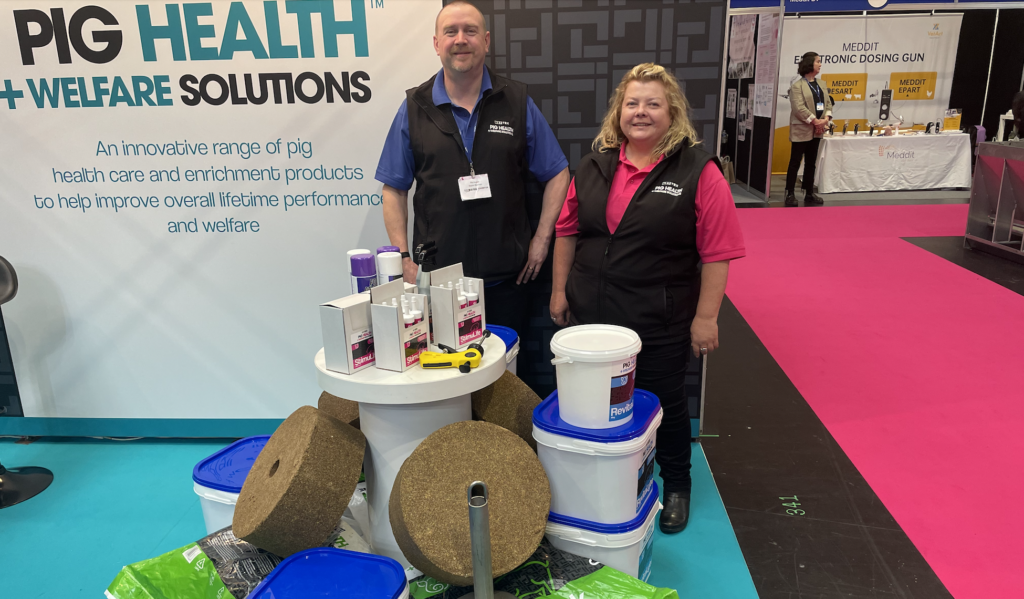Providing pigs with a new feed block and using an innovative tail spray has been shown to contribute to significant reductions in tail biting behaviour, while helping to improve pig health.
Studies by animal nutrition specialist Nettex showed piglets given its new CalmBlock enrichment product were 12% less likely to tail bite.
CalmBlock is a 20kg circular, pressed feed block, with a hole to provide a hanging option. The size and shape encourage pig’s natural curiosity which helps to relieve the stress and boredom that can lead to tail biting.
In a farm study, researchers split 12 pens with an average of 40 pigs per pen. Half were given CalmBlock and the other half acted as a control.
With CalmBlock, half the number of biting pigs had to be removed per pen, compared with the control, according to pig welfare and nutrition consultant, Phil Baynes.
“Both Defra and Red Tractor have advocated the use of edible enrichment products to help provide pigs with a stimulus that has an added nutritional benefit. The result is less aggressive, happier, healthier pigs that exhibit fewer vice behaviours,” he said.
The nutritional benefits of CalmBlock include added iron to avoid anaemia. The product also contains Phytotec, a unique blend of plant extractions and yeast components with appetite- stimulating effects.
“For piglets, CalmBlock also provides additional magnesium to aid protein and energy metabolism, along with bone growth. Magnesium helps to control mood and sleep regulation providing increased serotonin and melatonin to pigs,” Dr Baynes added.
Nettex has also released StopBite, a tail spray with a bitter taste that has sanitising properties and can help to dry minor wounds to enable faster skin healing.
“In pig units that have experienced tail biting, StopBite can help affected pigs to heal whilst also acting as a deterrent,” Dr Baynes said.
“Pig stress, frustration and boredom is natural and won’t go away, but we can use products like this to reduce the detrimental effect it has on animal health and also take the opportunity to both enrich the diet and environment that pigs receive.”




